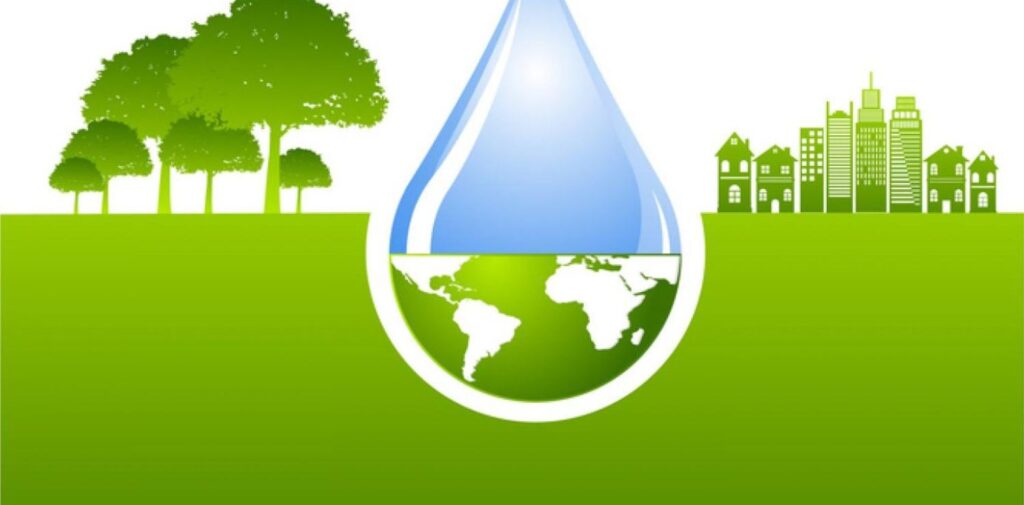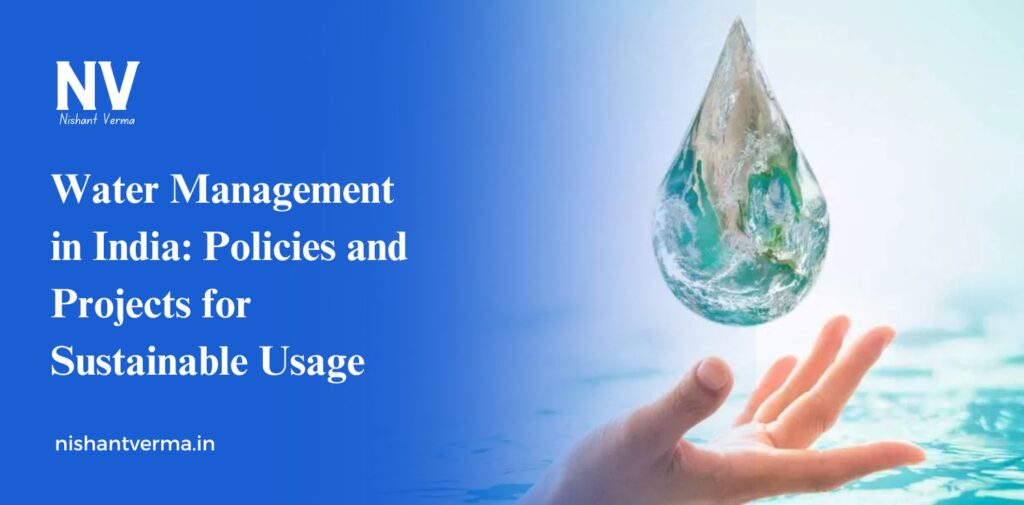Water is one of the most important natural resources for all life on Earth. In India, water plays a crucial role in daily life. It is needed for drinking, farming, cooking, cleaning, and even industries. However, despite having many rivers and sources of water, India faces a big challenge when it comes to managing water effectively. With a growing population and changing weather patterns, there are areas in India where water is running out, and people are struggling to get enough clean water. This is why water management is such an important issue in the country.
In this article, we will explore how India is working to manage water resources better through various policies and projects. These efforts aim to use water wisely and ensure that it is available for future generations.

Why Water Management is Important in India
India is home to 18% of the world’s population but only has 4% of the world’s water resources. This means that the demand for water in India is much higher than the supply. Climate change, pollution, and the growing population are making the problem worse. Many rivers and lakes are drying up, and the water in some places is getting polluted. This makes it difficult for people to access clean water.
Water management means using water in the best way possible to ensure that everyone has enough, and the environment remains healthy. It involves planning and controlling how water is used for drinking, farming, and industry. The goal is to use water efficiently and sustainably.
Key Policies for Water Management in India
The Indian government has created several policies to tackle the country’s water challenges. These policies aim to manage water resources wisely and ensure they are used sustainably for everyone’s benefit.
National Water Policy
The National Water Policy was first introduced in 1987 and has been revised several times to address the changing needs of the country. The main aim of this policy is to ensure that water resources are used in a way that benefits everyone, including farmers, industries, and urban areas. It focuses on:
- Efficient Use of Water: Encouraging the use of water in a more efficient way, especially in agriculture, which uses the most water.
- Water Conservation: Promoting water-saving techniques like rainwater harvesting and efficient irrigation methods.
- Pollution Control: Ensuring that water bodies like rivers, lakes, and ponds are kept clean and free from pollution.
This policy guides the government’s actions on water issues and helps in creating better water management strategies.
Jal Jeevan Mission
The Jal Jeevan Mission is a very important initiative launched by the government to ensure that every rural household in India has access to clean drinking water by 2024. The mission focuses on the following:
- Piped Water Supply: It aims to provide piped water directly to homes in rural areas, making it easier for people to get water without traveling long distances.
- Water Quality: The mission also focuses on making sure the water is safe and clean to drink, helping to reduce waterborne diseases.
- Community Participation: People in villages are encouraged to take part in the planning and management of water supply systems.
This mission is helping millions of people in rural India access clean water for daily use.
Namami Gange Programme
The Namami Gange Programme is a project focused on cleaning and rejuvenating the Ganga River, one of the most important rivers in India. The Ganga is a source of water for millions of people, but it has been heavily polluted due to industrial waste, sewage, and other pollutants. The Namami Gange project aims to:
- Clean the River: This includes setting up sewage treatment plants and preventing waste from being dumped into the river.
- Restore Ecosystem: The project also focuses on improving the river’s ecosystem, which includes the plants and animals that depend on the river for survival.
- Promote Awareness: Efforts are also being made to raise awareness about keeping the Ganga clean and how people can help protect the river.
This program is a significant effort to restore the Ganga’s health and ensure that it continues to be a reliable source of water for the people of India.

Atal Mission for Rejuvenation and Urban Transformation (AMRUT)
The AMRUT Mission focuses on improving water supply and sanitation in urban areas. Many cities in India face challenges with water supply and drainage systems. The AMRUT mission aims to:
- Improve Water Supply: The goal is to provide a continuous and reliable supply of clean drinking water in cities.
- Wastewater Management: The program also works on treating wastewater and ensuring that it is safely disposed of or reused.
- Urban Green Spaces: It also encourages the creation of parks and green spaces, which help in water conservation and maintaining the environment.
By focusing on cities, the AMRUT mission aims to solve water-related problems in urban areas where population density is high.
Innovative Projects for Water Conservation
Along with these policies, India is also implementing several innovative projects to manage water better and make sure it is available for future generations. These projects use modern technology and new ideas to solve old problems.
- Rainwater Harvesting: Rainwater harvesting is one of the simplest and most effective ways to conserve water. It involves collecting rainwater and storing it for later use. Many schools, homes, and even large buildings in India have started using rainwater harvesting systems. This water can be used for drinking, irrigation, and other daily needs. The government has encouraged people to adopt this technique by offering incentives and raising awareness about its benefits.
- Drip Irrigation: In India, farming uses a lot of water, and often, the water is wasted due to inefficient irrigation methods. Drip irrigation is a technique where water is delivered directly to the roots of plants in small amounts, reducing waste. This system helps farmers save water and increase crop yields. The government has been promoting this technology through subsidies and training programs.
- Check Dams and Water Reservoirs: A check dam is a small barrier built across a stream or river to store water. It helps in collecting rainwater, which can later be used for irrigation and drinking. Many rural areas in India are benefiting from check dams, which help prevent water shortages during dry seasons. The construction of water reservoirs is also another important method used to store water for future use.
- Water Audits: A water audit is a method of checking how much water is being used, where it is being used, and how efficiently it is being managed. Several cities and towns in India have started conducting water audits to identify waste and find ways to save water. This helps in reducing the overall water consumption and ensures that water is used sustainably.
Challenges to Water Management
Despite all these policies and projects, water management in India faces several challenges:
- Pollution: Many rivers, lakes, and groundwater sources are polluted due to industrial waste, untreated sewage, and chemicals used in agriculture.
- Climate Change: Changing weather patterns, including more frequent droughts and floods, are affecting the availability of water.
- Overuse of Groundwater: In many areas, groundwater is being overused, leading to wells drying up and water tables falling.

The Way Forward
To solve these challenges, India needs to continue its efforts in improving water management. This includes more awareness about water conservation, better infrastructure for water storage, and stricter laws to prevent pollution. Public participation is also essential, as everyone must play a role in using water responsibly and conserving it for the future.
Conclusion:
Water management in India is a critical issue that needs immediate attention. With the help of policies like the National Water Policy, projects like Jal Jeevan Mission, and innovations such as rainwater harvesting and drip irrigation, India is working towards ensuring that its water resources are used wisely. These efforts will help provide clean and sufficient water for all, protect the environment, and secure water for future generations. By working together, India can face its water challenges and ensure a sustainable future for everyone.




